Rotolight have always done things their own way. While a lot of other lighting companies have pursued making 1×1 or square/rectangular LED fixtures, Rotolight have continued to keep theirs round. Their latest light is the Anova Pro, a bi-colour LED fixture that is colour temperature changeable from 3150K to 6300K. The light is also flicker free at any output and offers a host of unique features that can’t be found in other lights.
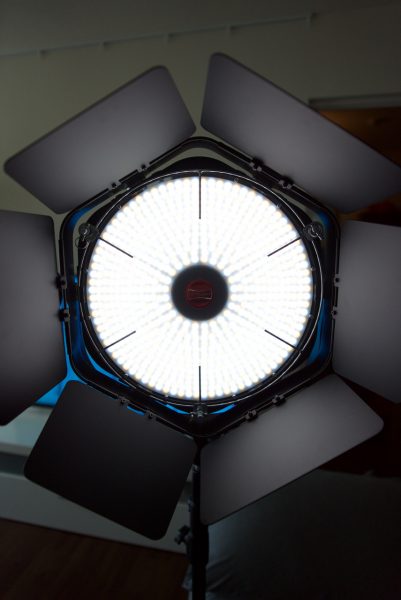
According to Rotolight, the design philosophy with the Anova PRO was to “Deliver a light that out of the box produces a very flattering, soft light source that almost gives the effect of a naturally diffused light.” The rationale for making the light round is to create a catchlight effect in the eye, and to give it a flattering ‘wrapping light quality’.
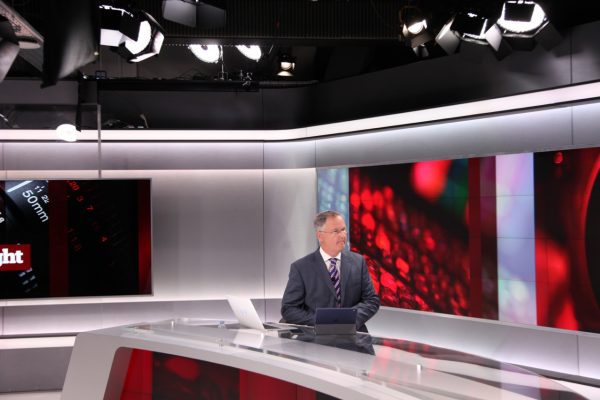
The Anova Pro uses quite wide 50 degree beam angle LEDs which are carefully spaced to ensure that each individual LED beam overlaps. The benefit of doing this is that the hundreds of individual LED elements give the appearance of coming from one source, to deliver one single uniform shadow. The problem with a lot of LED lights with a wide beam angle (over 90 degrees) is that the individual LEDs end up creating weird shadows.
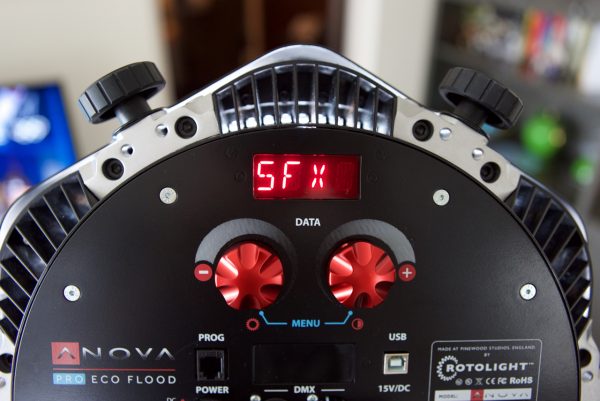
The light has a built in set of CineSFX lighting effects that allow you to recreate effects that normally would require specialist equipment. These include Strobe, Lightning, Fire, Cycle, Throb, Police, TV, Spin, Weld, Spark, Film, Neon and Gunshot. These can be remote triggerd using either a wired DMX trigger, or wirelessly triggerable using the PC sync port on the back of the light. There is also a new feature called FX slave which allows the Anova to act as a DMX master controller for not only previous generation Rotolights but also third party light sources with DMX inputs. This eliminates the need for expensive DMX desks, or expensive flicker boxes on set. Rotolight claims you can control up to 512 light sources. The CineSFX effects really are impressive, and they can come in very handy for creating lighting situations in the field that would otherwise be very difficult to replicate.
Along with the CineSFX, there are also True Aperture Dimming and Designer Fade effects. True Aperture Dimming calculates and displays the correct aperture (F-Stop) for your subject at a given distance. In theory this eliminates the need for using a light meter in certain situations. You can also adjust your brightness level, to coincide with your desired aperture (F-Stop). It is unfortunate that it doesn’t also show T-stops for those using the light with proper cinema lenses. The Designer Fade effect lets you dial in preset times for custom fade up / fade downs which can be handy for certain projects.
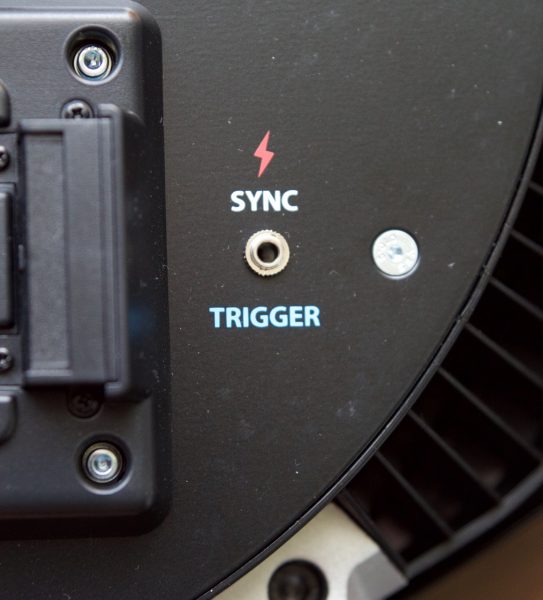
If those features weren’t enough, the Anova PRO is also the first bi-colour LED light in the world that has an inbuilt flash sync port, which means that for a stills photographer, you can replace your strobe and it does so with no recycle time and in high speed sync. When in flash sync mode, the light is able to flash at 150% of its maximum continuous output.
For those who are shooting both stills and video, this product eliminates the need for two separate purchases and removes many of the constant downsides of shooting with strobe (e.g. your flash not firing because of recycle time). If your job calls for both stills and video, or you’re working in multimedia, this function alone should put the Anova Pro right at the top of your list of lights to look at.
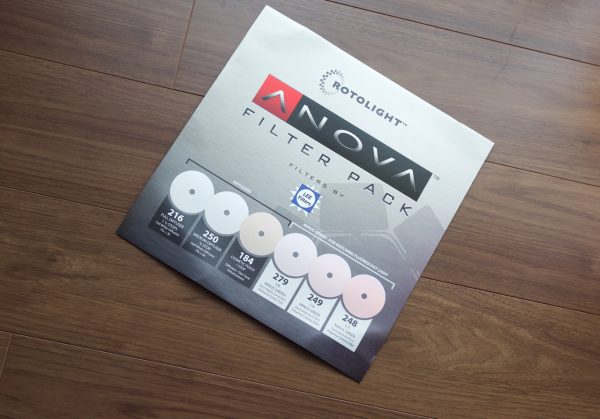
The Anova Pro also comes with a LEE 6 piece filter set (3 x diffusion, 3 x magenta). This is nice to have and gives you a lot of creative freedom for making subtle adjustments to the light.
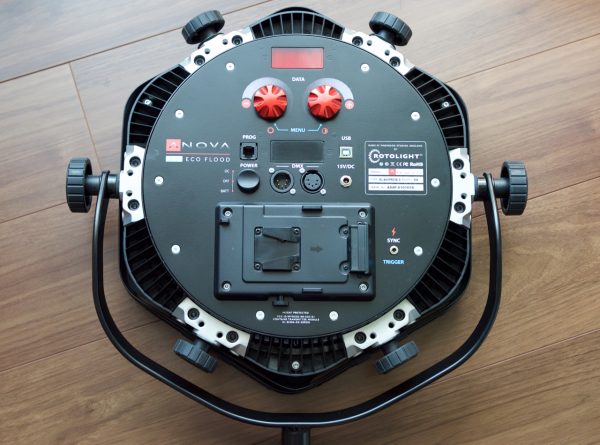
Despite all these new included features the Anova Pro is around $500 US cheaper than the Anova V2 Bicolor Standard LED EcoFlood. Rotolight have really had a close look at what the competition is offering and priced the Anova Pro very aggressively. The Anova Pro’s main competition is from the Litepanels Astra Bi-color 1×1, Litepanels Astra Bi-color Soft 1×1, and the KinoFlo Celeb 200 and soon to be released KinoFlo Diva Lite 200.
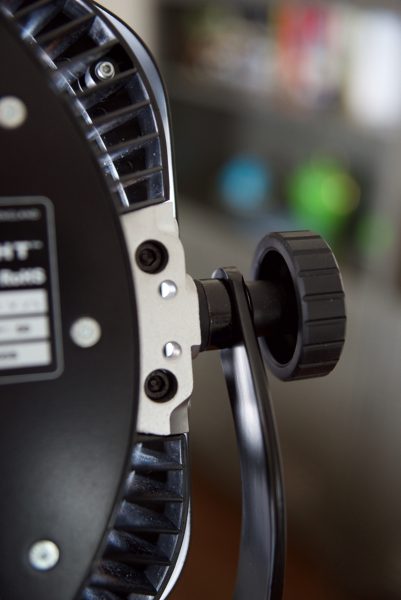
The overall build quality of the Anova Pro is very good. It is certainly well made and feels like a professional product that would stand the test of time. The light is as well-made as fixtures from companies such as Arri and BB&S, and doesn’t have the cheap plasticky feel of so many other lights on the market. The dials and switches have been well designed and feel solid to to use. The barn doors attach via four heavy duty locking knobs so there is no chance of them rattling around or falling off. The only problems I encountered when using the barn doors was that the individual panels tend to come loose very easily and I was having to tighten them on a regular basis. Rotolight do include a couple of allen keys in the kit to tighten the barn doors, but I found having to do this so often a little frustrating.
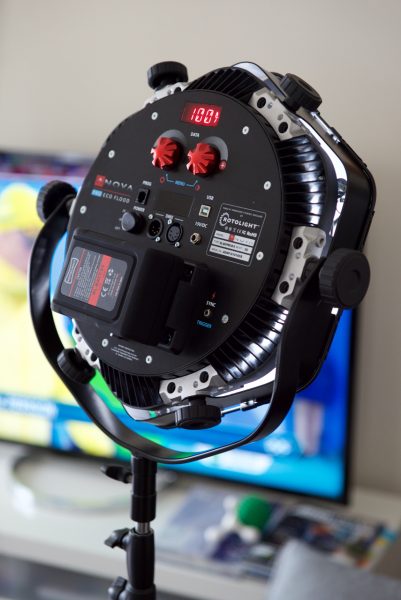
The light weighs in at 4.7kg (10.36lb) with the barn doors and frame attached. Without the barn doors it weighs 3.1kg (6.83lb). As a comparison, the Litepanels Astra Bi-color weighs 3.4kg (7.6lb), and the KinoFlo Celeb 200 weighs 6.8kg (15lb).
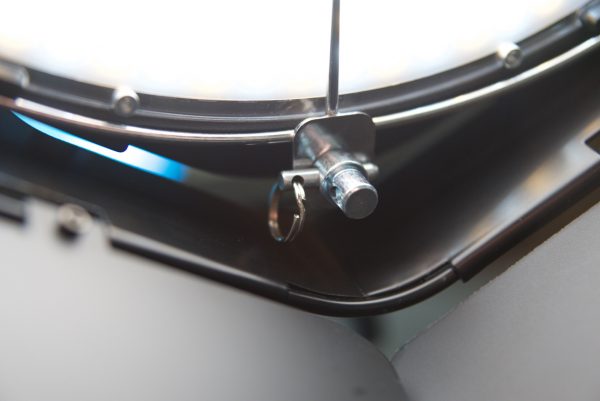
Rotolight have designed a nice quick solution for installing filters and keeping them secure. A wire ring with six inward-facing metal rods holds the filters in place. A small removable pin on the latches allows for the ring to be lifted and a filter inserted. Once the filter is in place you just push the frame down and secure the pins. I found from using the light I only had to remove one pin to put a filter in. This makes it very quick and convenient for swapping filters in and out.
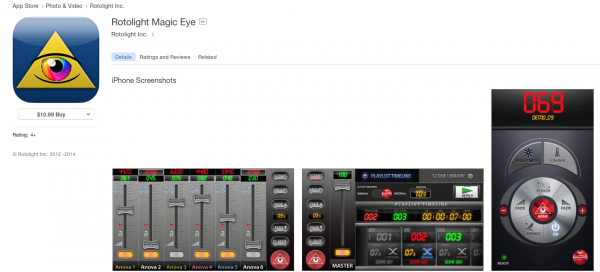
There is a IOS app called Magic Eye that gives you wireless control over your light, but this only works with wi-fi versions. In the Masters Kit flight case I was testing there was a card saying to download this app now, so of course I paid the $10.99AU and did. I should have checked more carefully, because the Anova Pro I was testing didn’t have the wireless capability. There will be separate optional Wifi models available in 2017. This may be a small complaint, but most customers who see something saying “download now” in the box their product comes in are probably going to go ahead and do it. I spoke to Rotolight about this and was told that they incorrectly added a warranty card from an Anova V2 light which included a download link to the Apps. They clarified that production units leaving the factory will not include any such cards.
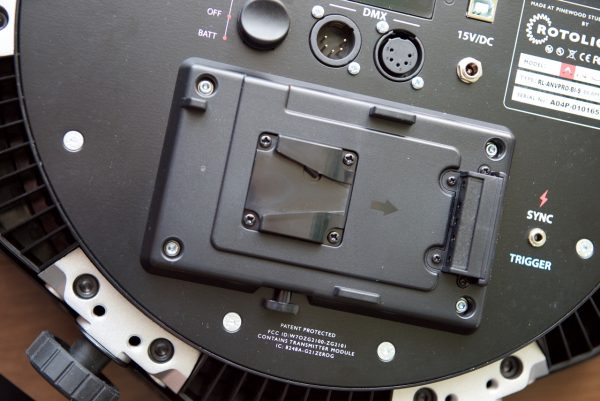
The low power draw of the Anova Pro is perhaps its most impressive feature. The light draws just 48 watts at 100% output, which gives it a huge advantage over most other battery-powered-capable lights on the market. As a comparison, the Litepanels Astra Bi-color 1×1 draws 110W and the KinoFlo Celeb 200 draws 100W. This low power draw allows you to run the Anova Pro at full power for over 2hrs on a 95Wh battery. This makes the light a very good proposition for news and documentary shooters who often need to set up lights in remote places and run them off camera batteries. Knowing that you can power the light and get over two hours of run time gives you piece of mind if you’re shooting live crosses or long interviews.
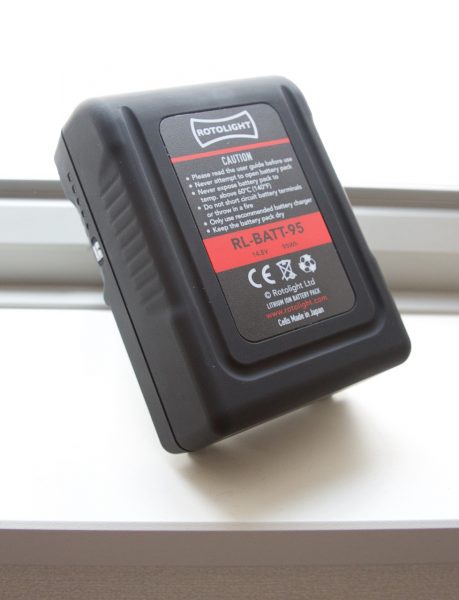
Rotolight are also now making their own 95Wh v-lock batteries with cells sourced from Japan. The battery weighs in at 725g (25.77oz), and has a built in d-tap output that can also be used to charge the battery. A single battery and d-tap travel charger can be bought for £216.65 exc. VAT ($283 US). If you buy the masters kit, which includes barn doors and a flight case, there is a nice cut out spot to keep a battery and the charger.
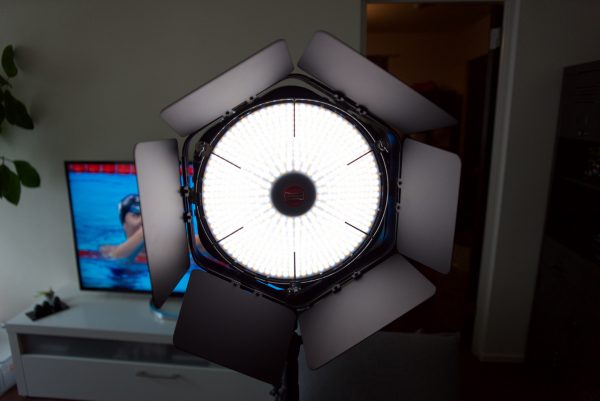
A big factor for a lot of people when buying a light is how much output it can produce. I tested the lights output at 3200K and 5600K using a Sekonic C-700; you can see the results below.
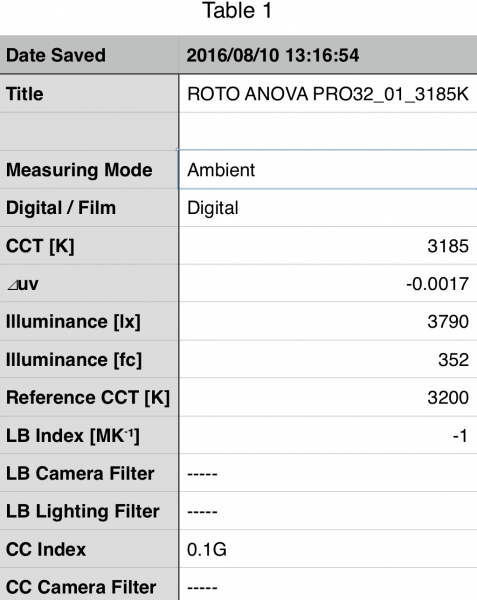
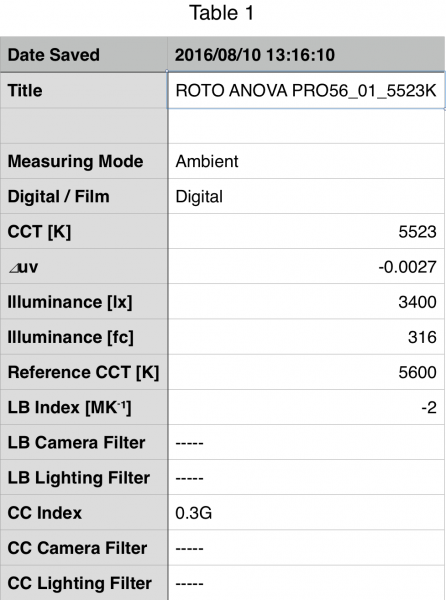
At 3200K the Anova Pro recorded a output of 3790lx at a distance of 1 meter. At 5600K it recorded 3400lx, and at 6300K 2920lx. The results were a little bit surprising as most bi-colour LED lights tend to have a higher output at 5600K than they do at 3200K. The light’s output nonetheless was impressive given its low power draw. As a comparison, the Kinoflo Diva Lite 200 which I tested at NAB recorded 3060lx at 5600K and 2980lx at 3200K. The Litepanels Astra Bi-colour 1×1 has significantly more output with claimed figures of 4577lx at 5600k when tested at a distance of 1.5 meters. The Litepanels Astra Bi-color Soft, which has a inbuilt diffusion panel, registers 3000lx at 5600K and 2200lx at 3200K. If you’re looking for high output, the Anova Pro 5600K only version puts out a claimed 7200lx at 3’ (91cm).
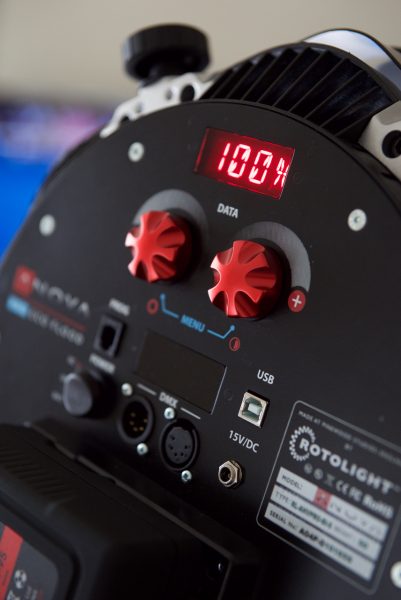
As far as colour temperature accuracy is concerned, the Anova Pro at 5600K gave me a kelvin reading of 5523K and a ⊿uv (the value to show how much this light is away from being an ideal light source) of -0.0027. At 3200K it recorded 3185K and a ⊿uv of -0.0017. These are excellent results and give you peace of mind that when you set the light at a certain colour temperature, that’s the colour temperature you’re actually going to get.
After testing the output and colour temperature accuracy I then wanted to test the Anova Pro for colour accuracy. Below you can see the results for the light at 3200K.
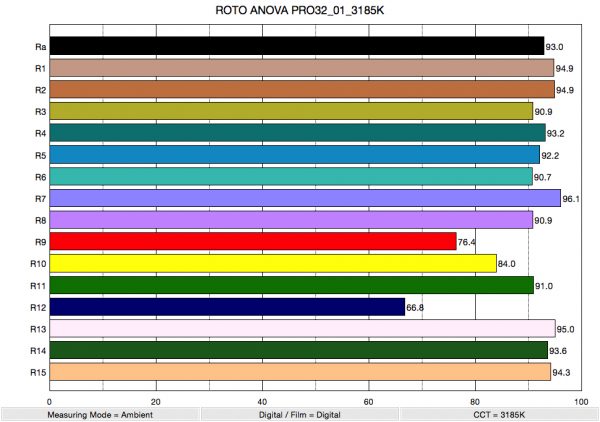
At 3200K the light recorded an average CRI (R1-R8) of 89.66 and a extended CRI (R1-R15) of 92.09. As far as replicating accurate skin tones the Anova Pro recorded 76.4 for R9 (red), 95 for R13 (closest to caucasian skin tones), and 94.3 for R15 (closest to Asian skin tones). The score for R9 was a little lower than I would have expected, but the overall results for proper skin tone reproduction were pretty good. Where the light did struggle was replicating the colour blue (R12), where it recorded a score of just 66.8. A score in the 60% range would mean in theory that you would need to colour correct anything in your scene that was blue in post to replicate it correctly. Below, you can see the difference if we compare the Spectral Distribution charts between the Anova Pro and a Litepanels Bi-Colour Soft 1×1.
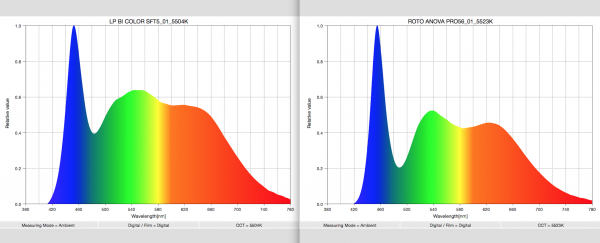
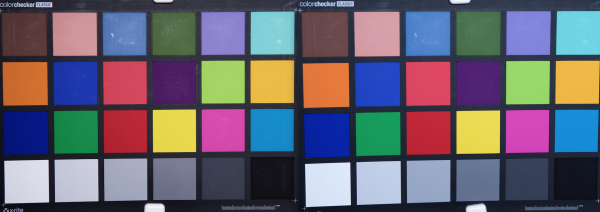
I wanted to see if these results for R12 (blue) actually did make any real world difference. Above you can see a colour checker card that was lit at 5600k by both the Litepanels Astra Bi-color Soft 1×1 and the Anova Pro. As you can see, despite the far lower score for R12, the Anova Pro still manages to replicate blue colours well. There is very little real world difference between the Litepanels and the Rotolight.
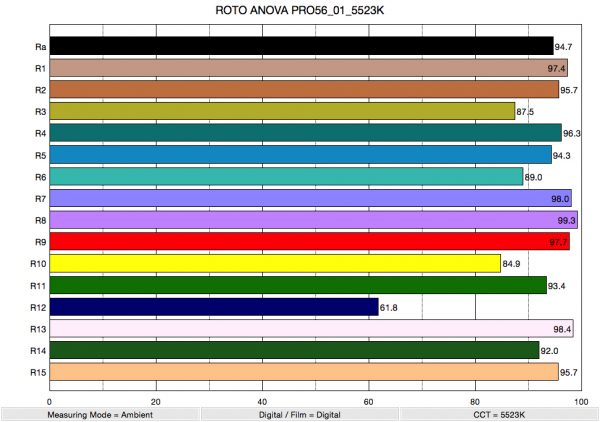
When I tested the light at 5600K the scores improved over those at 3200K. At 5600K it had a average CRI (R1-R8) of 94.7, and a extended CRI (R1-R15) of 92.09. For replicating accurate skin tones it recorded 97.7 for R9 (red), 98.4 for R13 (closest to caucasian skin tones), and 95.7 for R15 (closest to Asian skin tones). These were excellent results, but again, the light seems to have a problem with R12 (blue), scoring just 61.8. To be fair to Rotolight, the KinoFlo Diva Lite 2000 also struggles with R12 (blue), recording just 72.6.
Below you can see a head to head comparison of colour accuracy between the Rotolight Anova Pro, Litepanels Bi-Color Soft 1×1 and the Kinoflo Diva Lite 200, which will be available in October this year.
3200K
Rotolight Anova Pro Bi-colour 50 degree
Average CRI (R1-R8)- 93
Extended CRI (R1-R15)- 89.66
R9 (red)- 76.4
R13- (closest to caucasian skin tones)- 95
R15- (closest to asian skin tones))- 94.3
Litepanels Bi-Color Soft 1×1
CRI (R1-R8)- 98.6
Extended CRI (R1-R15)- 97.32
R9- (red)- 95.5
R13- (closest to caucasian skin)- 99.5
R15- (closest to asian skin tones)- 98.4
KinoFlo Diva Lite 200
CRI (R1-R8)- 96.8
Extended CRI (R1-R15)- 95.22
R9- (red)- 91.6
R13- (closest to caucasian skin)- 96.1
R15- (closest to asian skin tones)- 98.5
5600K
Rotolight Anova Pro Bi-colour 50 degree
Average CRI (R1-R8)- 94.7
Extended CRI (R1-R15)- 92.09
R9 (red)- 97.9
R13- (closest to caucasian skin tones)- 98.4
R15- (closest to asian skin tones))- 95.7
Litepanels Bi-Color Soft 1×1
CRI (R1-R8)- 94.7
Extended CRI (R1-R15)- 92.51
R9 (red)- 86.9
R13 (closest to caucasian skin)- 95.8
R15 (closest to asian skin tones)- 95.8
KinoFlo Diva Lite 200
CRI (R1-R8)- 96.1
Extended CRI (R1-R15)-93.09
R9- (red)- 89.7
R13- (closest to caucasian skin)- 94.7
R15- (closest to asian skin tones)- 92.6
If you look at the data from the head-to-head comparisons, the Rotolight performs extremely well at 5600K when it comes to reproducing accurate skin tones, despite its overall colour reproduction numbers being slightly lower. Any numbers over 90+ are truly excellent and you would be hard-pressed to tell the difference between any light that has average scores in the 90s.
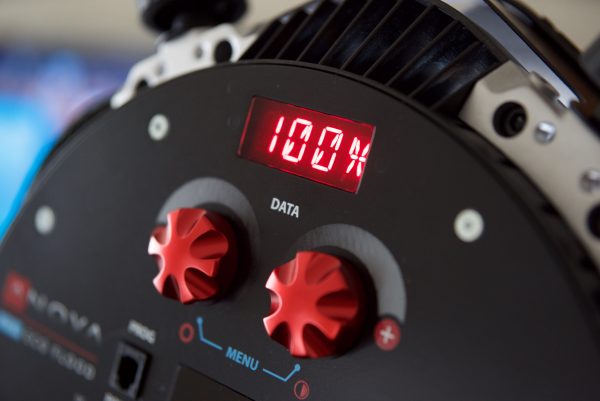
As I have mentioned in other lighting reviews, the numbers only tell part of the story. You can have the most colour accurate light in the world, but if it is difficult to use and operate then you are going to leave it at home. Thankfully, the Anova Pro is very quick and easy to use. Making changes to the output and colour temperature is very straightforward and the LCD display lets you accurately monitor and see any changes that you make. Changing filters is quick and hassle free and the built in v-lock battery plate and low power consumption allow you to run the light off a camera battery for long periods of time. This also makes moving the light around easy, as you’re not having to look for power outlets and run long extension cables across the floor.
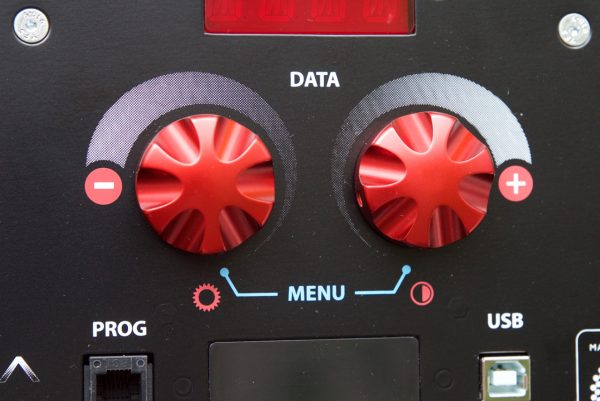
Getting into the menu is straightforward but I still struggle sometimes with remembering how to make changes to the SFX features. In fairness, this is probably something that could be overcome by using the light on a more regular basis, and news and documentary shooters are unlikely to be using these features that often.
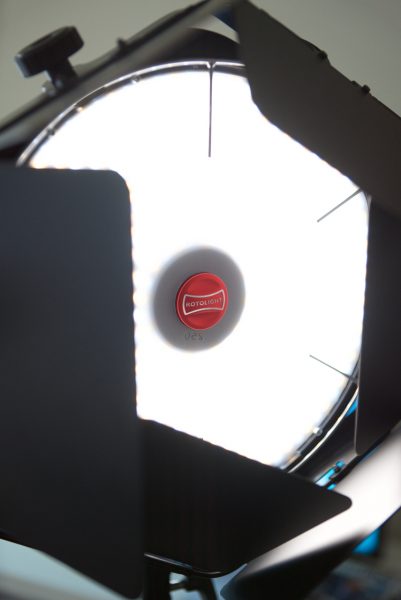
The additional barn doors are nice, but they can’t be moved in a circular rotation around the light as they are locked down. I also found that because there are six doors, instead of the usual four, they can be a little fiddly and awkward to use. The barn doors do tend to end up hitting each other when you start closing them down to control the light. The other minor downside of the barn doors is that if you are using them, they end up hitting the the light’s yolk frame if you try and angle the light down. I found this very frustrating when trying to use the light to illuminate something that was lower than the height of the light.
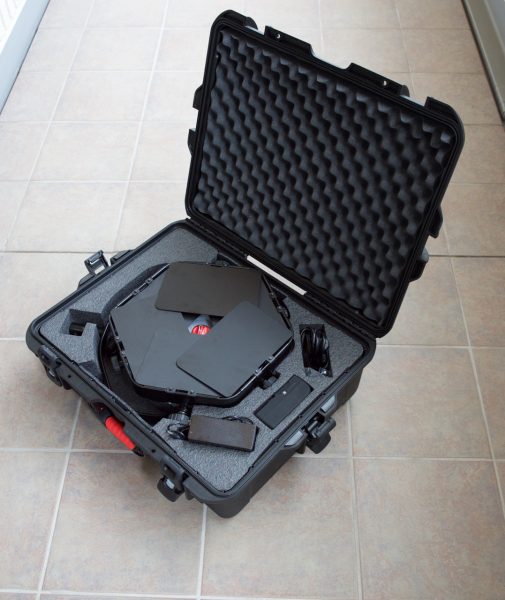
The flight case that comes as part of the Masters Kit is beautifully designed and made. It is a great option for transporting the light around. The only slight negative is that the case is quite large and weighs around 11.5kg with the light inside. Some shooters may find that not to be a problem, but again it really depends on what you’re used to travelling with and how much kit you normally take.
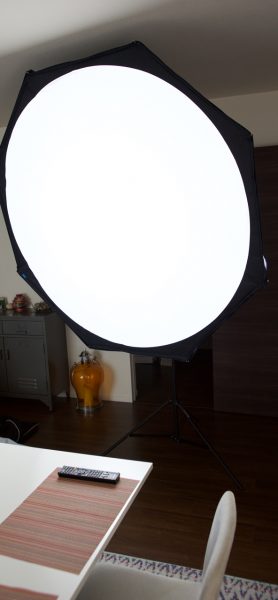
The Anova Pro comes in three different versions. There is a standard Bi-colour 50 degree beam spread, which is the one I have been testing, a Bi-colour 110 degree beam spread ultra wide version, and a 5600K fixed daylight version. All three of the lights can be purchased separately or in a Masters Kit, which includes barn doors and a flight case. The 50 degree Bi-colour and 100 degree Bi-colour versions are £1004.99 exc. VAT ($1312 US). The 5600K fixed daylight version is an additional £50 excluding VAT. The Masters Kit is an additional £249.99 excluding VAT ($326.50 US). The Masters Kit with the Bi-Colour 50 degree beam spread that I have been testing comes in at £1299.99 excluding VAT ($1697 US). As a price comparison, the Litepanels Astra Bi-color 1×1 costs $1350 US. If you were to purchase the Astra with barn doors, v-lock battery plate and hard case, that total would go out to around $1800 US. The Kinoflo Celeb 200 retails for $2373 US, barn doors are $398.50 and a hard case is $288.75 US.
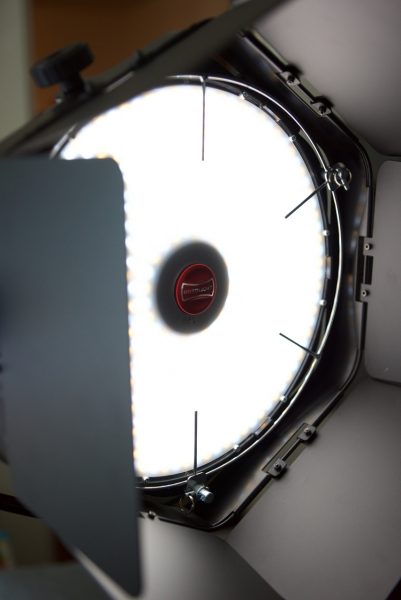
The Anova Pro certainly does offer a lot of functionality at a very reasonable price. The build quality is superb, and the power output is exceptionally good given the light’s small power draw. For news and documentary shooters, the ability to run the Anova Pro off camera batteries that are under 100Wh for long periods of time is a huge selling point. The light is colour accurate and very good at replicating skin tones correctly. It is also excellent at reproducing the correct colour temperature across its 3150-6300K range. The Masters Kit which I have been testing is probably the way to go if you’re seriously looking at this light and are going to travel with it. While it may not have the high power output of a Litepanels Astra Bi-color 1×1, it certainly comes with far more options as standard, and a set of features that are unique to Rotolight. It’s good to see a company not follow the market trends and stick to creating a unique product that stands out from its competition.
I really like the Anova Pro. The low power draw is a killer feature and that alone should make the light a very popular choice with news and documentary shooters. With so many in-built features, good colour accuracy and a strong output, it could quite possibly be one of the best bang for your buck LED lights currently on the market.





